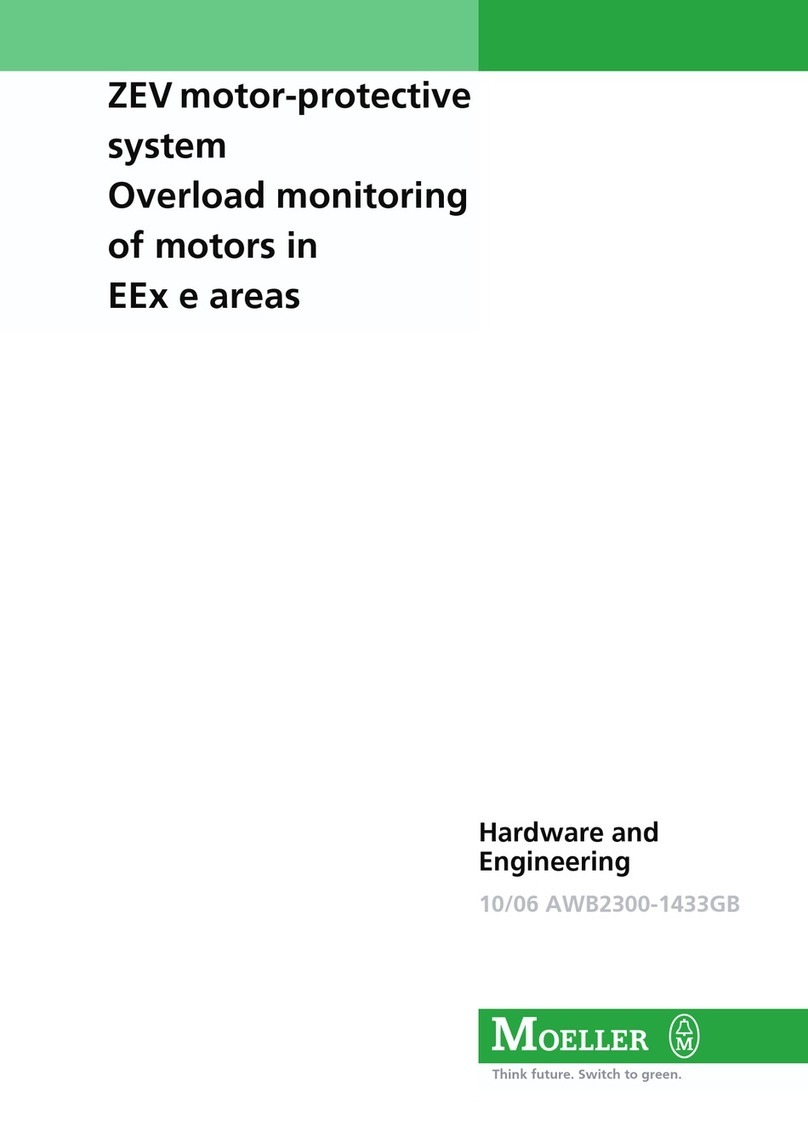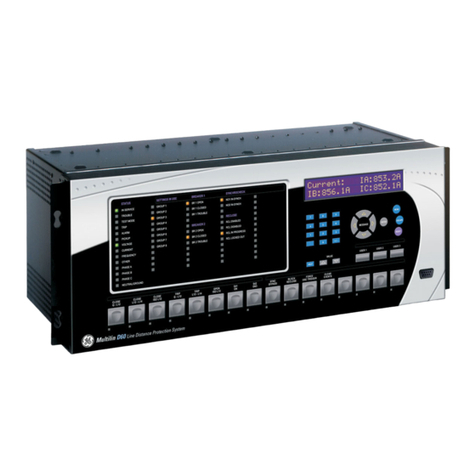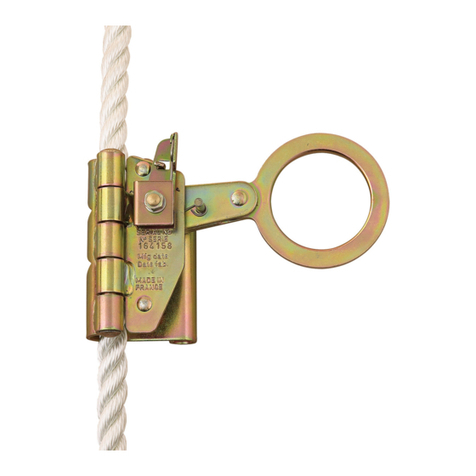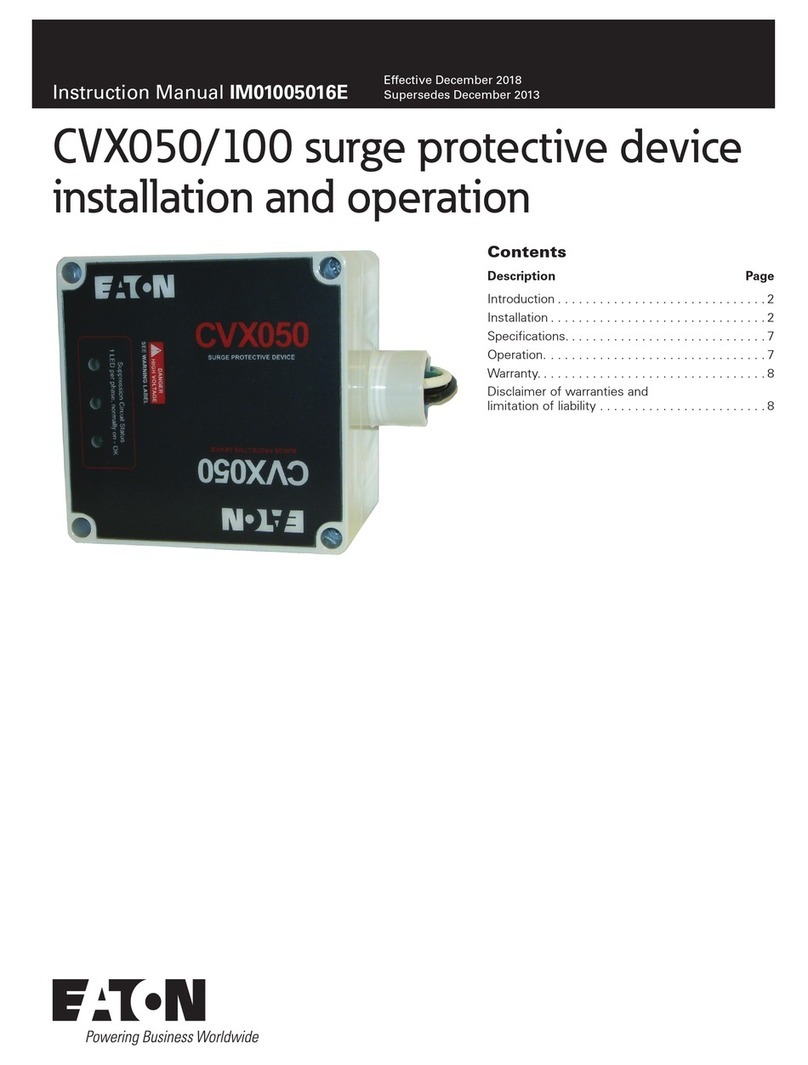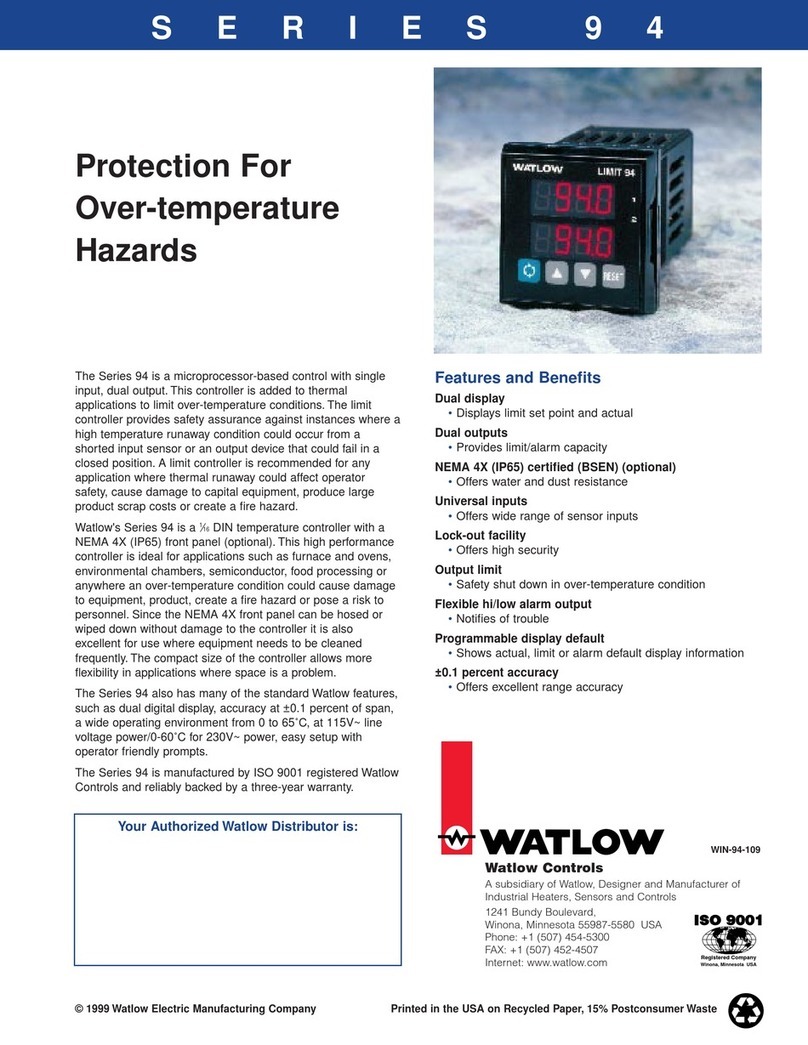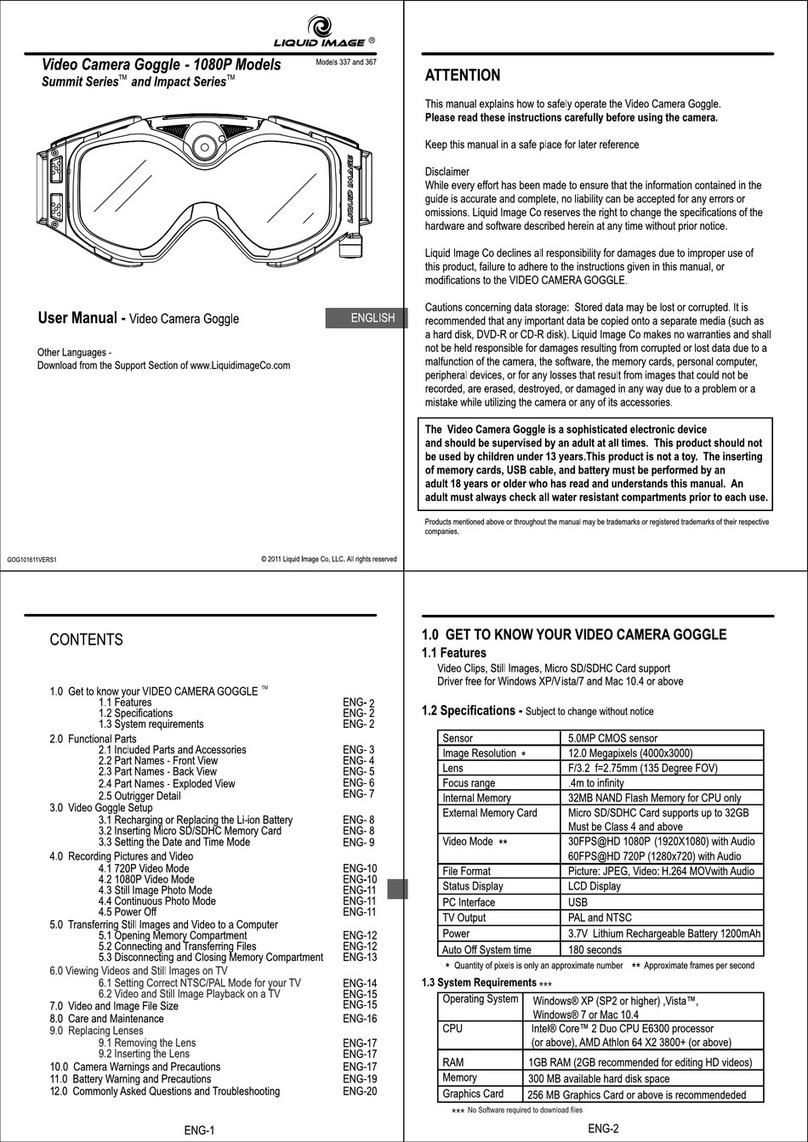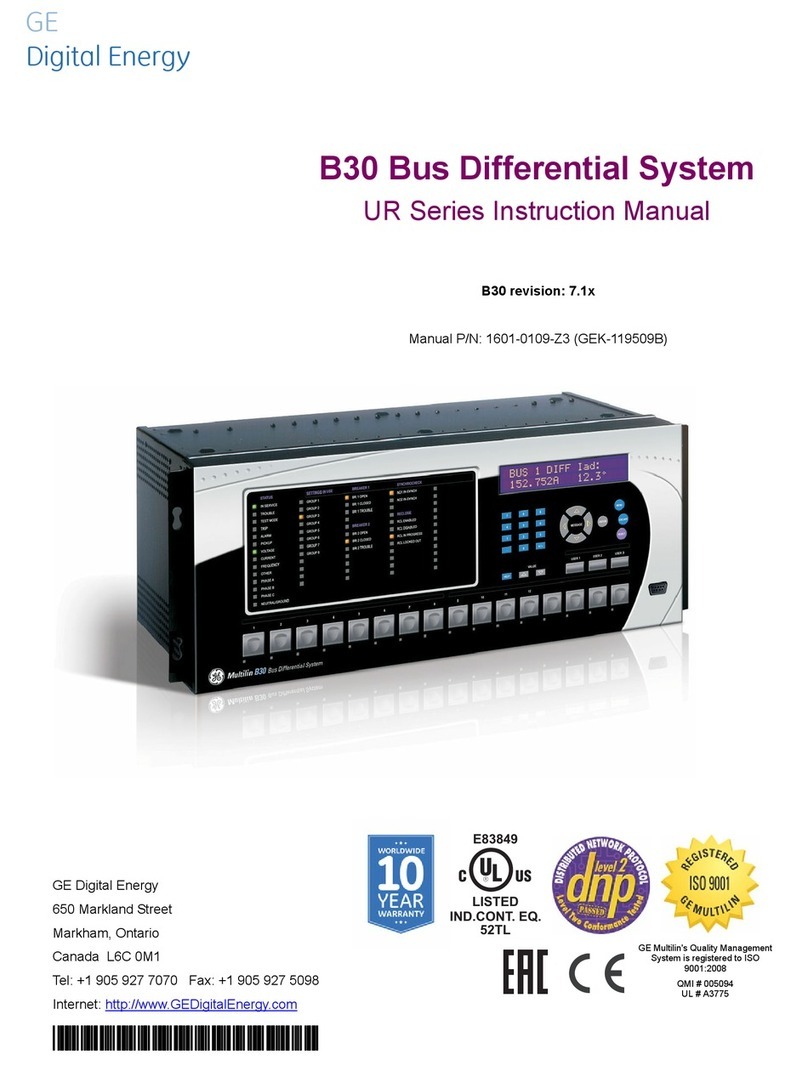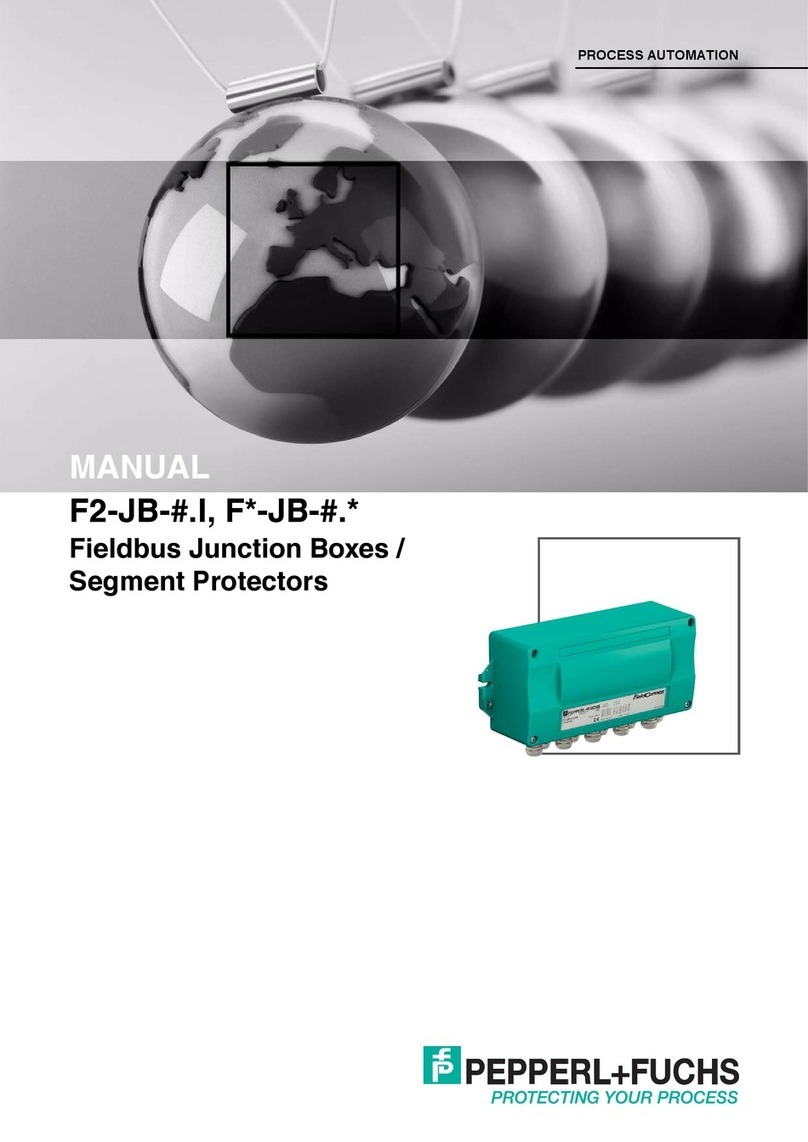KRIWAN INT69 YF Diagnose Series User manual

User Manual
Pump protection module
INT69® YF Diagnose
Phase
monitoring of 3~
1x Motor
temperature 2x
Bearing- or media
temperature
Switching
frequency
limitation
Leakage
LED status
display
Diagnose
Interface
Relais
output
Analog input

1
Table of contents
1 General information ......................................................................................................2
1.1 Description.............................................................................................................. 2
1.2 Additional documents.............................................................................................. 2
1.3 Symbols used.......................................................................................................... 2
2 Safety notices................................................................................................................3
2.1 General................................................................................................................... 3
2.2 Intended use ........................................................................................................... 3
2.3 Personnel requirements.......................................................................................... 3
2.4 Safety notices for maintenance ............................................................................... 3
3 Transportation, storage and disposal..........................................................................4
3.1 Checking the as-delivered condition........................................................................ 4
3.2 Transportation......................................................................................................... 4
3.3 Storage ................................................................................................................... 4
3.4 Disposal.................................................................................................................. 4
4 Product description ......................................................................................................5
4.1 Configurations......................................................................................................... 5
4.2 Technical data......................................................................................................... 5
4.3 Dimensional drawing............................................................................................... 6
4.4 Functional description ............................................................................................. 7
4.4.1 Motor temperature............................................................................................ 7
4.4.2 Temperature monitoring................................................................................... 7
4.4.3 Leakage monitoring.......................................................................................... 8
4.4.4 Phase monitoring............................................................................................. 8
4.4.4.1 Phase failure:................................................................................................ 8
4.4.4.2 Phase sequence:.......................................................................................... 8
4.4.4.3 Phase asymmetry:........................................................................................ 8
4.4.4.4 Undervoltage and overvoltage:..................................................................... 8
4.4.5 Analog input..................................................................................................... 8
4.5 Outputs ................................................................................................................... 9
4.5.1 Alarm relay....................................................................................................... 9
4.5.2 Warning relay................................................................................................... 9
4.5.3 Diagnostics port ............................................................................................... 9
4.5.4 Duo LED .......................................................................................................... 9
4.6 Switching frequency limits......................................................................................10
5 Commissioning ...........................................................................................................11
5.1 Wiring.....................................................................................................................11
5.1.1 Circuit diagrams..............................................................................................11
5.1.2 Terminal coding...............................................................................................12
5.2 Parameterization....................................................................................................15
5.2.1 Parameter table...............................................................................................15
6 Operation.....................................................................................................................17
6.1 Diagnose................................................................................................................17
6.2 INTspector .............................................................................................................17
6.2.1 Quick guide to the INTspector app..................................................................19
7 Dismantling/device replacement................................................................................25
8 Accessories.................................................................................................................25
9 EU Declaration of Conformity.....................................................................................25

2
1 General information
1.1 Description
The INT69 YF Diagnose tripping device is a versatile universal protection device. Various temperature,
voltage, leakage/resistance measurement and analogue signal inputs are available in a single module
for monitoring electrical components. Parametrization enables protection function and response
settings to be adapted flexibly to suit the application. The INT69 YF Diagnose saves operating and
fault data in a non-volatile memory. This data can be read out and evaluated for diagnostics purposes.
This tripping device is used primarily for the protection of pumps.
1.2 Additional documents
In connection with these operating instructions, the following documents should be observed:
• The data sheet for the Diagnose diagnostics device
• General or application-specific SOPs within the context of the Health and Safety at Work Act
and the Ordinance on Work Equipment and Tools
• Accident prevention regulations
• Legal regulations
• Local regulations
1.3 Symbols used
Meaning of the symbols and safety notices used in this document.
Please note that a safety symbol is never a substitute for a safety notice in text form -
therefore always read all safety notices!
This document contains information that must be observed to avoid personal injury and equipment damage.
Safety information to avoid personal injury is indicated by means of a color code with a warning
triangle and a signal word defined in accordance with ANSI Z535.6-2006: A1.2.
The signal words are classified according to ANSI Z535.6-2006: C4.2.
Depending on the degree of risk, the notices are shown as follows:
This indicates that death or serious injury will occur if the relevant precautions are not
taken here!
This indicates that death or serious injury may occur if the relevant precautions are not
taken here
This indicates that minor injury may occur if the relevant precautions are not
taken here!
This denotes information and tips for use. It does not represent a safety notice.
The text of a safety notice is divided into:
_________________________________________________________________________________
Description of the nature/source of the danger
Description of the consequences of disregarding the safety notice.
Measures for avoidance
_________________________________________________________________________________

3
2 Safety notices
2.1 General
Please note that the device is intended exclusively for the scope of application specified in this
document and/or in the data sheet. Use other than or going beyond this shall not be deemed as
intended use.
Always use the device
• As intended
• In sound condition
• With an awareness of safety and risks.
The device should only be operated within its specified performance limits (see Technical data).
Ensure that any faults that could jeopardize safety are rectified immediately.
Only original manufacturer parts are permitted to be used as spare parts and accessories.
2.2 Intended use
The INT69 YF Diagnose primarily monitors the proper operation of pumps. Possible functions include
monitoring voltage/power network, temperature and leakage.
Any 0 – 20 mA sensor can also be connected, for example, for pressure or vibration monitoring.
The relevant details can be found in chapter 4.2 Technical data.
Any use other than or going beyond this shall not be deemed as intended use.
2.3 Personnel requirements
Improper installation, commissioning or maintenance.
•Risk to operational safety
Installation, commissioning and maintenance work should only be
carried out by authorized skilled personnel.
Please read the operating instructions through carefully.
Disregarding them can result in the failure of or irreparable
damage to the device or lead to injuries.
2.4 Safety notices for maintenance
The INT69 YF Diagnose devices are maintenance-free and therefore have no
specified fixed inspection intervals.

4
3 Transportation, storage and disposal
3.1 Checking the as-delivered condition
Before commissioning, the INT69 YF Diagnose should be checked for mechanical damage.
3.2 Transportation
Transportation only in original transport packaging or in suitable individual packaging.
3.3 Storage
Storage only in original transport packaging or in suitable individual packaging.
3.4 Disposal
All associated components must be disposed of in accordance with your country's applicable disposal
regulations.
For Germany, this includes:
Electrical waste
Equipment bearing this symbol is subject to European Directive 2002/96/EC. All waste
electronic and electrical equipment must be disposed of separately from domestic
waste. Ask your city council (municipal administration, local authorities) about how to
dispose of waste equipment in an environmentally responsible way.

5
4 Product description
4.1 Configurations
INT69 YF Diagnose
Standard
Extended
20A700P081
22A700P081
20A701P081
22A701P081
Supply voltage
AC/DC 50/60 Hz
24 V ±10% 9 V A
AC/DC 50/60 Hz 100-
240 V±10 % 9 V A
AC/DC 50/60 Hz
24 V ±10% 9 V A
AC/DC 50/60 Hz
100-240 V±10 % 9 V A
Motor temperature
monitoring
x
x
x
x
Temperature
monitoring
x
x
x
x
Leakage monitoring
x
x
x
x
Phase monitoring
x
x
x
x
Analog input
x
x
Warning relay
x
x
4.2 Technical data
Supply voltage
- 20 A…
- 22 A…
AC/DC 50/60 Hz 24 V ±10% 9 V A
AC/DC 50/60 Hz 100-240 V±10 % 9 V A
Permissible ambient temperature TA
-30 to +70°C
Temperature measuring circuit
– Type
– R25, total
– Trip, static
– Reset
– Max. length of connecting cable
– Short circuit monitoring
– Open circuit monitoring
1-2 AMS sensors in series, alternatively 1-9 PTC
sensors as per DIN 44081, DIN 44082 in series
<1.8 kΩ
4.5 kΩ ±20%
2.75 kΩ ±20%
30 m
<20 Ω
>20 kΩ
Temperature measuring circuit
– Type
– Measuring range
– Resolution
– Accuracy
– Short circuit monitoring
– Open circuit monitoring
Pt100
-50 to +300°C
1 K
5% of measuring range final value
<20 Ω
>400 Ω
Temperature measuring circuit
– Type
– Measuring range
– Resolution
– Accuracy
– Short circuit monitoring
– Open circuit monitoring
Pt1000
-50 to +300°C
1 K
5% of measuring range final value
<20 Ω
>2.3 kΩ
Switching input
– Type
– Contact suitable for
– Max. length of connecting cable
Floating switch (digital input)
DC 24 V, 20 mA
30 m
Leakage measuring circuit
– Type
– Measuring range
– Resolution
– Accuracy
Resistance measurement between
electrode pair
10 k to 1 MΩ
1 kΩ ±10% of final value in measuring range 10 k to
100 kΩ ±25% of final value in measuring value
101 k to 1 MΩ
Analog input
– Type
– Applied voltage
0-20 mA/4-20 mA current signal
DC 24 V +5% -25%

6
– Measuring range
– Resolution
– Accuracy
– Max. length of connecting cable
0-20 mA
0.1 mA
2.5% of measuring range final value
30 m
Phase monitoring
– Operation with frequency converter
– Measuring range, phase-phase
– Operating frequency range
– Typ. operating frequency
– Min. detection time
– Monitoring runs
Suitable
3 AC 20-100 Hz 100-690 V ±10%
1-16 kHz
8 kHz
100 ms
Phase sequence, phase failure, phase asymmetry,
undervoltage and overvoltage
Switching frequency monitoring
Switches per time unit, configurable
Switch-off limits, general
Configurable if not specified
Restart delay
Configurable
Reset of lock or restart delay
Network reset >5 s only possible once any faults
have been rectified
Relay
– Contact
– Mechanical service life
AC 240 V 2.5 A C300 min. AC/DC 24 V 20 mA
Approx. 1 million cycles
Interface
Diagnostics port (DP)
Degree of protection as per EN 60529
IP20
Connection type
Tension spring connection (PUSH IN) 0.2-2.5 mm2
Housing material
PA 66 GF 30
Fixing
Control cabinet housing (basic grid 45 mm),
clippable on to 35 mm standard rail as per
EN 60715
Dimensions
See dimensions in mm
Weight
Approx. 300 g
Test regulations
EN 61000-6-2, EN 61000-6-3 EN 61010-1
Overvoltage category III (pay attention to
temperature sensor insulation)
Degree of pollution 2
Approval
UL File No. E473026 cURus
4.3 Dimensional drawing

7
4.4 Functional description
Parametrization of the individual inputs and outputs enables the device to be adapted to suit your
relevant application. For each input and output, a trip delay (time until the relays trip in the event of
a fault) and restart delay (time until the relays return to a ready state after rectification of the fault) can
be programmed to suit the application. A switch-off lock can also be selected in parameterization
mode. This setting means that, after a fault, the system remains switched off until a network reset.
For each input, a hysteresis can be set in parameterization mode.
You can find out more about parameterization in chapter 5.2.
The inputs and outputs of the INT69 YF Diagnose are described below, and the corresponding
features are explained. The motor temperature, temperature monitoring, leakage monitoring and
phase monitoring inputs, as well as the analog input, are examined. The alarm relay, warning relay,
diagnostics port and duo LED outputs are then dealt with in more detail.
The individual functions are illustrated via the help texts of the KRIWAN INTspector app.
Monitoring functions, with the exception of PTC and bimetal monitoring, switch off
after their parameterized trip delay.
All inputs can also be deactivated.
4.4.1 Motor temperature
For motor temperature monitoring (terminals T1 and T2), PTC, PT100, PT1000 or bimetal sensors
can be parameterized.
•PTC selected: When the nominal response temperature of the PTC sensors installed
in the motor winding is reached, switch-off occurs after a static evaluation process.
•Pt100, Pt1000 selected: When the parameterized switch-off temperature of the
Pt100/Pt1000 sensors installed in the motor winding is reached, switch-off occurs after
a static evaluation process.
•Bimetal selected: If the bimetal sensor installed in the motor winding responds,
switch-off occurs after a static evaluation process.
A short circuit or open circuit at a temperature input also leads to a switch-off, except if bimetal
is selected.
4.4.2 Temperature monitoring
For temperature monitoring (terminals T3 and T4 or T5 and T6), PTC, PT100 or PT1000 sensors can
be parameterized. Two separate inputs are available for temperature monitoring.
•PTC selected: When the nominal response temperature of the PTC sensors installed
in the motor winding is reached, switch-off occurs after a static evaluation process.
•Pt100, Pt1000 selected: When the parameterized switch-off temperature of the
Pt100/Pt1000 sensors installed in the motor winding is reached, switch-off occurs after
a static evaluation process.
A short circuit or open circuit at a temperature input also leads to a switch-off.

8
4.4.3 Leakage monitoring
For leakage monitoring (terminals E1 and E2 or E3 and E4), depending on the device configuration,
either conductance testing or float switch mode can be parameterized.
•Conductance testing selected: If the conductance exceeds the parameterized limit,
switch-off occurs when the conductance value has been continuously exceeded for
the set switch-off delay time. The function can also be parameterized for values falling
below a set conductance value. Conductance is tested using AC voltage to prevent
the risk of electrolysis in the system. It is possible to use the grounded motor housing
as a second electrode for conductance testing. In this case, the grounded motor
housing must be connected to E2 or E4.
•Float switch mode selected: Switch-off occurs if the float switch reaches its target
position (NC and NO mode parameterizable).
4.4.4 Phase monitoring
Phase monitoring includes the monitoring functions: Overvoltage, undervoltage, phase sequence,
phase failure and phase asymmetry.
Phase monitoring (terminals L1, L2, L3 and FE) is active 6 s after the motor is started.
When the motor is stopped, phase monitoring is deactivated for approx. 2 s to prevent unwanted
switch-off due to the machine running temporarily in reverse.
With the phase input, it is possible to read in up to 690 V AC at a frequency converter capacity of
20 - 100 Hz. To ensure adequate separation between the device and the phases, the phases are read
in via a high-resistance input.
4.4.4.1 Phase failure:
Monitored throughout the entire motor runtime. The alarm relay is switched off when the
parameterized percentage of a phase, measured against the average of all three phases, is exceeded.
4.4.4.2 Phase sequence:
Correct phase sequencing is monitored for 5 s. If the phase sequence is incorrect, the alarm relay
switches off.
4.4.4.3 Phase asymmetry:
Monitored throughout the entire motor runtime and is the percentage deviation of a phase, measured
against the average of all three phases. The warning or alarm relay is switched off when the actual
value exceeds/falls below the value set in the protection device in %.
4.4.4.4 Undervoltage and overvoltage:
Monitored throughout the entire motor runtime. When the warning or switch-off limit set in the
protection device is reached, the warning or alarm relay is tripped.
4.4.5 Analog input
In the extended version, a 0-20 mA measuring signal can also be read in. Switch-off occurs if the
value exceeds/fall below a set switching point.

9
4.5 Outputs
4.5.1 Alarm relay
The alarm relay output is a switching output in the form of a changeover contact. The purpose of the
relay is to electrically isolate the output from the internal device circuit. The alarm relay works
according to the closed current principle. If a fault is detected, the alarm relay drops out.
4.5.2 Warning relay
The warning relay output is a switching output in the form of a changeover contact. It is only available
in the extended configuration. The purpose of the relay is to electrically isolate the output from the
internal device circuit. The warning relay works according to the closed-current principle. If a warning
is detected, the warning relay drops out.
4.5.3 Diagnostics port
The diagnostics port is used to provide serial data.
4.5.4 Duo LED
The installed LED indicates the current status of the tripping device (see blink code).
In fault-free operation, the LED shows a steady green light.
1st blinking
sequence
(LED red)
2nd blinking
sequence
(LED orange)
Description
1
1
Motor temperature:
Static switch-off, permissible winding temperature exceeded
1
4
Motor temperature:
Sensor input detected an open or short circuit
2
1
Phase monitoring:
Incorrect phase sequence
2
2
Phase monitoring:
Phase failure/asymmetry
2
3
Phase monitoring:
Undervoltage/overvoltage
3
1
Temperature input 1:
Static switch-off/warning, permissible temperature exceeded
3
2
Temperature input 2:
Static switch-off/warning, permissible temperature exceeded
3
4
Temperature input 1:
Sensor input detected an open or short circuit
3
5
Temperature input 2:
Sensor input detected an open or short circuit
4
1
Leakage 1:
Static switch-off/warning, permissible limit exceeded/undershot
4
3
Leakage 2:
Static switch-off/warning, permissible limit exceeded/undershot
5
1
General:
Internal fault
5
2
General:
Supply voltage too low
5
3
General:
Current loop, static switch-off/warning, permissible
limit exceeded/undershot
5
4
General:
Current loop, sensor fault detected, closed current undershot
5
5
General:
Switching frequency, static warning, permissible switches exceeded

10
4.6 Switching frequency limits
The INT69 YF Diagnose monitors the switch-on processes of a superordinate switching unit of the
machine, depending on the set time unit, and switches off if the set value is exceeded. A restart occurs
in accordance with the conditions of the restart delay. Switching frequency limits are only available if
the phase monitor is active.

11
5 Commissioning
5.1 Wiring
5.1.1 Circuit diagrams
First level (front terminals)

12
Second level (back terminals)
5.1.2 Terminal coding
1. Clip the device in the control cabinet or control box on to a 35 mm standard rail.
2. Connect the supply voltage and sensors according to the circuit diagrams.
Applying the supply voltage without sensors being connected is detected as a fault
and stored in the internal memory of the diagnostics device.

13
3. To actuate the push-in spring terminal, preferably use a narrow flat-head screwdriver. Use the
screwdriver to push the spring terminal down, insert the cable or sensor connection into the
relevant hole and then loosen the terminal again.
4. To prevent future faults during reconnection or maintenance, the push-in spring terminals can be
individually coded. To do this, remove the terminal from the device and pull the relevant pins out
of the device using fine pliers. Then insert the pins in the places provided on the terminal.

14
5. Each pin can now be separately coded together with its counterpart in the terminal. For this,
use a flat-head screwdriver to move the pins inserted in the terminal into one of the four
possible positions.
Pins

15
When refitting the terminal in the device, the pins are automatically clicked back into their position in the
device. Coding of the terminals is complete. We recommend coding each terminal as described above.
5.2 Parameterization
The KRIWAN INTspector app visualizes your system's operating data.
The aim of the following is to provide support when using the KRIWAN INTspector app. The following
examples are based on the KRIWAN Diagnose device INT69® YF 22A701P081, 20A701P081 and
app version 4.2.2.
To use the app, you need to download the INTspector app from the app store on your terminal device.
Then connect the protection device either via the Bluetooth gateway (02S377S021) or via the USB
gateway (02S365S21 – not compatible with Apple products) with your terminal device and open the
INTspector app.
More about the KRIWAN INTspector app in chapter 6.2.
5.2.1 Parameter table
Parameter name
Setting range
Unit
Min
Max
Motor temperature 1
– Sensor type
– Switch-off temperature
– Warning temperature
– Hysteresis
– Trip delay
– Restart delay
– Lead correction
Deactivated
-100
-100
0
0.1
0
0
PT100
300
300
300
3600
Locked
100
°C
°C
K
s
s
Ω
Temperature 1
– Sensor type
– Switch-off temperature
– Warning temperature
– Hysteresis
– Trip delay
– Restart delay
– Lead correction
Deactivated
-100
-100
0
0.1
0
0
PT1000
300
300
300
3600
Locked
100
°C
°C
K
s
s
Ω
Temperature 2
– Sensor type
– Switch-off temperature
– Warning temperature
– Hysteresis
– Trip delay
– Restart delay
– Lead correction
Deactivated
-100
-100
0
0.1
0
0
PT100
300
300
300
3600
Locked
100
°C
°C
K
s
s
Ω
Leakage 1
– Operating mode
– Switch-off value
– Warning value
– Hysteresis
– Trip delay
– Restart delay
Deactivated
10
10
1
0.1
0
Resistance undershoot
1000
1000
999
3600
Locked
kΩ
kΩ
kΩ
s
s
Leakage 2
– Operating mode
– Switch-off value
Deactivated
10
Resistance undershoot
1000
kΩ

16
– Warning value
– Hysteresis
– Trip delay
– Restart delay
10
1
0.1
0
1000
999
3600
Locked
kΩ
kΩ
s
s
Analog input 1
– Operating mode
– Closed current
– Switch-off value
– Warning value
– Hysteresis
– Trip delay
– Restart delay
– Calculation of minimum value
– Calculation of maximum value
– Calculation of unit, characters 1 & 2
– Calculation of unit, characters 3 & 4
– Analog input, active delay
Deactivated
0 = Deactivated
0.1
0.1
0.1
0.1
0
-500.0
-499.9
0
0
0.5
Limit undershoot
19.9
19.9
19.9
19.9
3600
Locked
5999.9
6000.0
65535
65535
6553.5
mA
mA
mA
mA
s
s
s
Phase monitor 1
– Operating mode, phase monitor
– Voltage supply
– Phase failure, switch-off value
– Phase failure, restart delay
– Operating mode, phase sequence
– Phase asymmetry, switch-off value
– Phase asymmetry, warning value
– Phase asymmetry, hysteresis
– Phase asymmetry, trip delay
– Phase asymmetry, restart delay
– Operating mode, undervoltage
– Undervoltage, limit 1
– Undervoltage, limit 2
– Undervoltage, hysteresis
– Undervoltage, limit 1, trip delay
– Undervoltage, limit 2, trip delay
– Undervoltage, restart delay
– Operating mode, overvoltage
– Overvoltage, limit 1
– Overvoltage, limit 2
– Overvoltage, hysteresis
– Overvoltage, limit 1, trip delay
– Overvoltage, limit 2, trip delay
– Overvoltage, restart delay
Deactivated
Phase-neutral
0
0
Deactivated
1
1
1
0.1
0
Deactivated
100
100
1
0.1
0.1
0
Deactivated
0.1
1
1
0.1
0
Active
Phase-phase
100
Locked
Active
100
100
99
360
Locked
Limit 1, warning
690
690
600
360
360
Locked
Limit 1, warning
690
600
360
360
Locked
Switching frequency
– Operating mode
– Restart delay
– Switching per time range
– Time range
Deactivated
0
2
1
Warning
Locked
10
43200
s
s
INTspection Memory
– Basic time grid, range 1
– Time factor, range 2
– Time factor, range 3
– INTspection Memory, fault, offset
– Evaluation, measurement value 1
– Evaluation, measurement value 2
– Evaluation, measurement value 3
– Evaluation, measurement value 4
– Evaluation, measurement value 5
– Evaluation, measurement value 6
– Evaluation, measurement value 7
– Evaluation, measurement value 8
– Evaluation, measurement value 9
– Evaluation, measurement value 10
1
1
1
1
Minimum
Minimum
Minimum
Minimum
Minimum
Minimum
Minimum
Minimum
Minimum
Minimum
3600
3600
3600
100
Maximum
Maximum
Maximum
Maximum
Maximum
Maximum
Maximum
Maximum
Maximum
Maximum
s

17
6 Operation
6.1 Diagnose
The KRIWAN Diagnose diagnostics system allows data captured in KRIWAN Diagnose devices to be
output via the DP interface. This enables users to evaluate the functioning of the machine in real time
and, if necessary, respond faster to faults.
Using the KRIWAN INTspector app, which is available for free from the Appstore, Google Play Store
and Windows store, as well as a KRIWAN gateway (INT600 DU Gateway or INT600 DB Gateway),
users can call up the data captured by the INT69 YF Diagnose directly, wherever they are, on a
smartphone, tablet or notebook. The parameters of the INT69 YF Diagnose can also be set via a
parameterization mode in the INTspector app, enabling optimum INT69 YF Diagnose device settings
for the relevant application.
6.2 INTspector
The INTspector app from KRIWAN is an advancement of the innovative machine and system
protection with communication function.
The app enables data stored by the protection device to be read out directly to the system. This gives
you access to the fault memory/counter, enabling you to assess the current system status and view
operating data.
The app can also be used to create a report in PDF format, which can then, if required, be forwarded
directly to your customers.
With parameterization mode, the KRIWAN protection device can be adapted perfectly to suit your
application.
These functions require a DP-USB or DP-Bluetooth gateway (Bluetooth 4.2) for communication.
The app also enables data sheets for the installed KRIWAN products to be called up for fast,
paperless access during maintenance and repair work in the system. Using a smartphone or tablet
camera, the data matrix code can be scanned or the article number of the relevant product can be
selected.
The system status can be analyzed via the LED blink code, by entering the blink code in the
INTspector app. The current fault is displayed immediately.
These functions do not require a gateway.
INTspector

18
KRIWAN INTspector app
Android iOS Windows

19
6.2.1 Quick guide to the INTspector app
In the KRIWAN INTspector app, various terms have help texts, which open when you
tap on them.
INTspector homepage
Diagnostics data
Overview
Module view, No fault
Module view, Warning
Module view, Alarm
Parameterization mode
Overview
See parameterization
mode
Call up diagnostics
data:
The diagnostics data
shows data captured by
the device. Bluetooth 4.2
required.
Open menu:
1. Info: About INTspector,
Support, System log, Device
information
2. Settings: Language, etc.
3. Read DP data
PDF report:
The app can also be used
to create a PDF report,
which can then, if
required, be forwarded
directly to customers.
Current settings
Change parameters
Connection via Bluetooth/USB
Confirmation of the change
INTspector homepage
Diagnostics data
Overview
Module view, No fault
Module view, Warning
Connect via
Bluetooth:
This function requires a
Bluetooth gateway. The
terminal device must have
at least Bluetooth 4.2.
Connect via USB:
This function requires
a USB gateway.
Module view, Alarm
Parameterization mode
Overview
Current settings
Connection via Bluetooth/USB
Change parameters
Confirmation of the change
This manual suits for next models
4
Table of contents
Popular Protection Device manuals by other brands
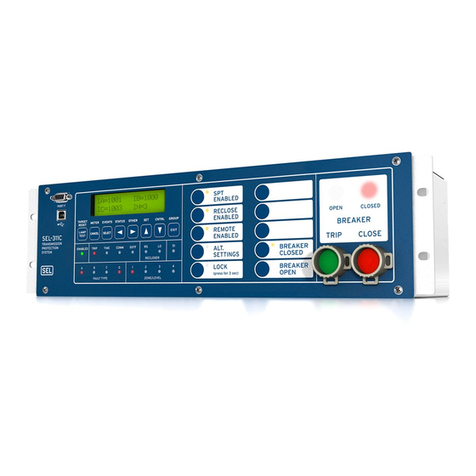
Schweitzer Engineering Laboratories
Schweitzer Engineering Laboratories SEL-311C instruction manual
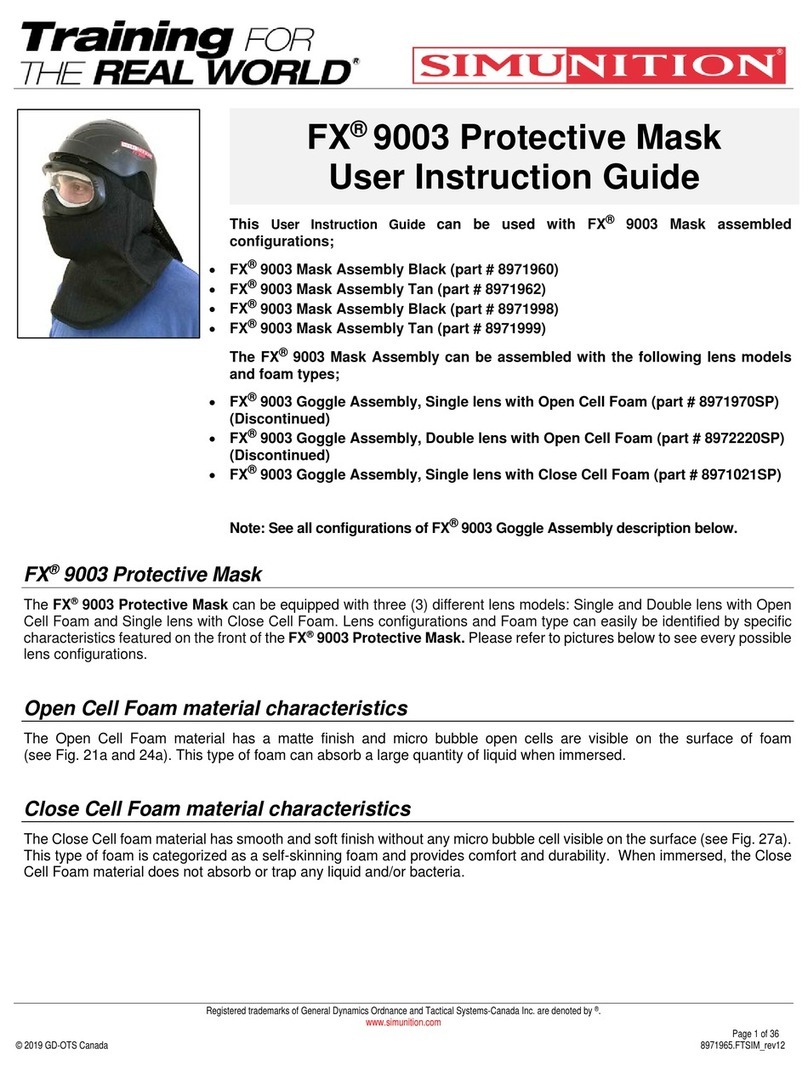
Simunition
Simunition FX 9003 User instruction guide
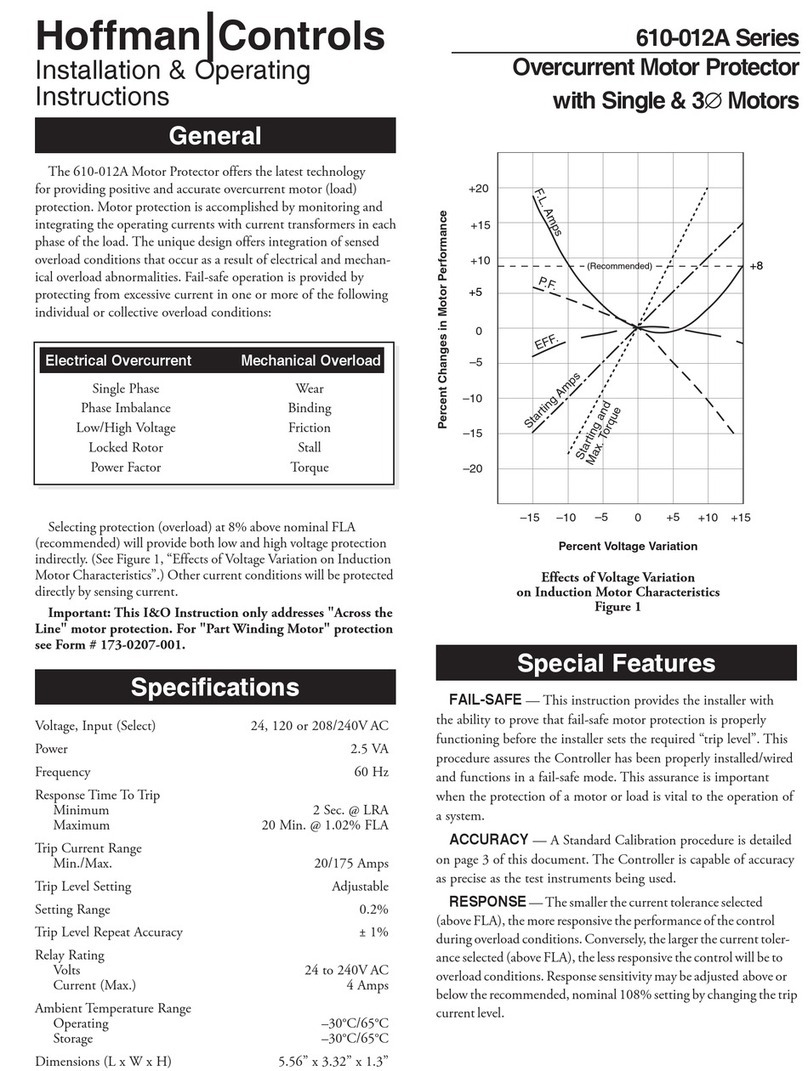
Hoffman Controls
Hoffman Controls 610-012A Series Installation & operating instructions

RS
RS Peltor HTRXS Instruction leaflet
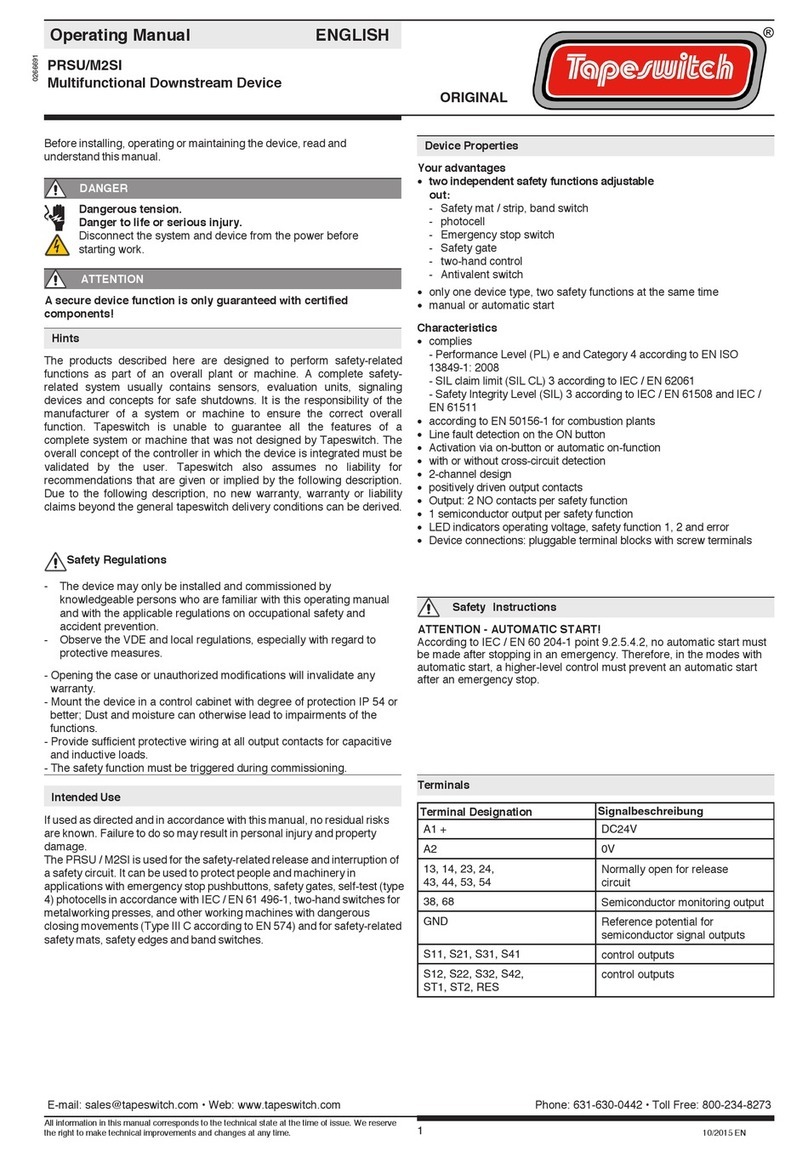
Tapeswitch
Tapeswitch PRSU/M2SI operating manual
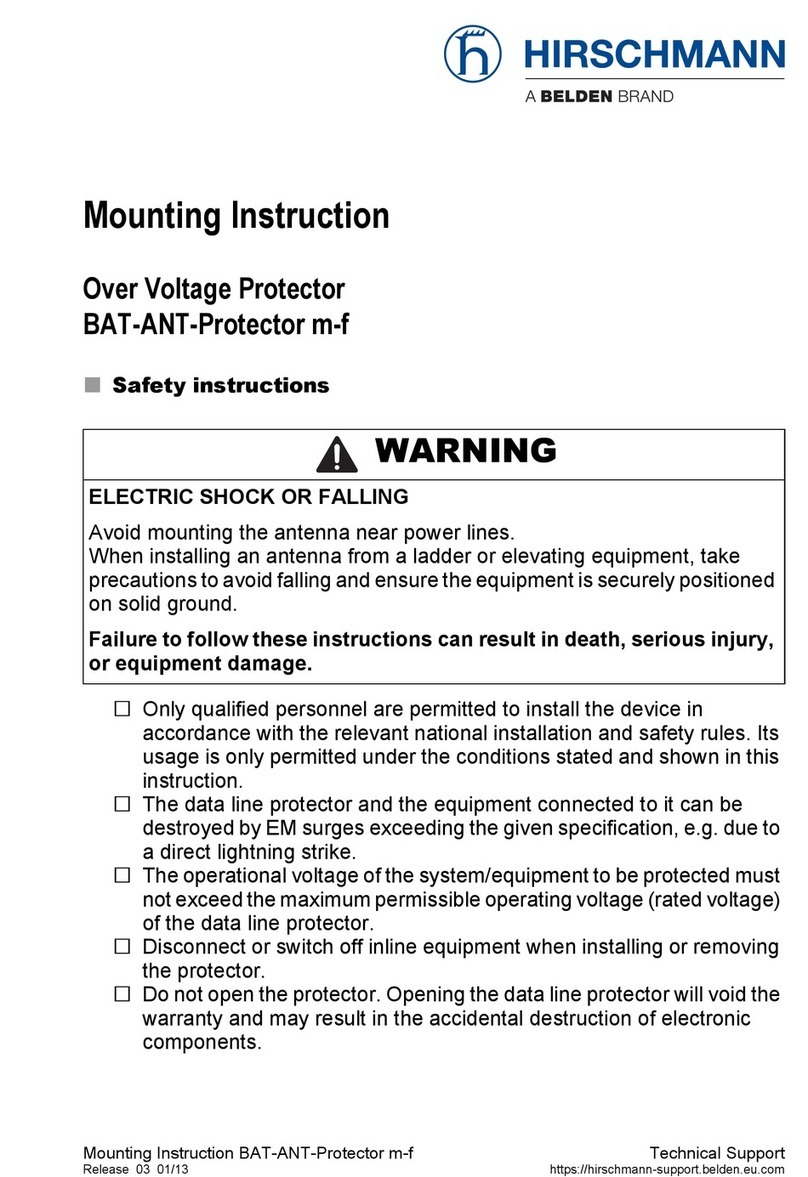
Belden
Belden Hirschmann BAT-ANT-Protector m-f Mounting instruction

